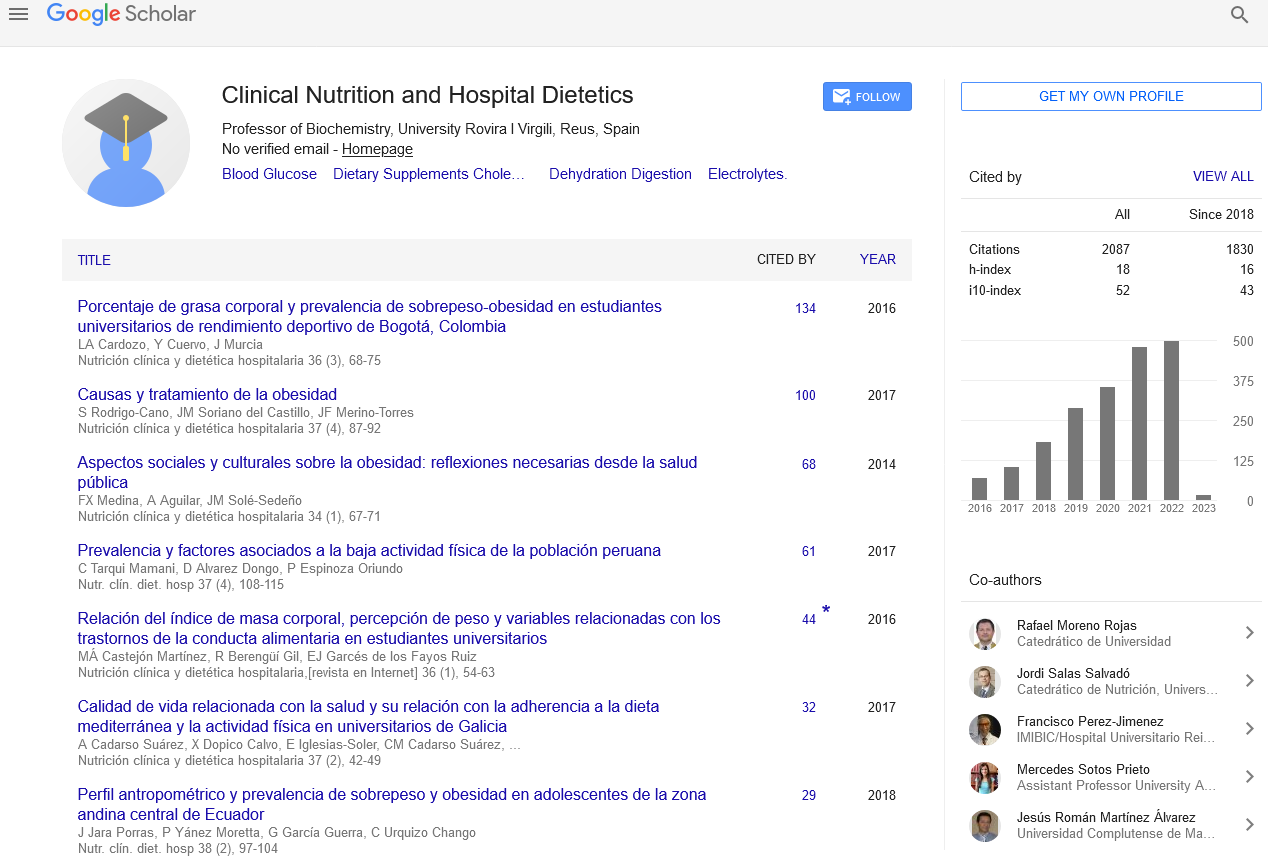Abstract
Nutritional, biochemical parameters and life styles associated with developed of in adults of Imbabura, Ecuador
Author(s): Salazar Lugo, Raquel 1,2; Nicolalde Saavedra, Jennifer2; Maldonado Noboa, Victoria2; SantamarÃÂa Coronado, Manuel 2; Barahona Meneses, Amparito2; Salas Salas, Hilda2; Oleas Galeas, Mariana2
Introduction: The world’s obesity epidemic has been influenced by an obesogenic environment that added to presence of genetic factors produces the developed of cardiometabolic phenotypes which are shown depending of nutrigenetic environment and life styles.
Objetive: In this study were evaluated nutritional, biochemical factors and lifestyles associated with the development of cardiometabolic phenotypes in a adults of Imbabura, Ecuador.
Materials and Methods: Nutritional, biochemical parameters and lifestyle were determined. Metabolic syndrome (MS) was determined and prevalence of hypertriglyceridemic waist (HTGW) phenotype and metabolic syndrome-hypertriglyceridemic waist phenotype (MS-HTGW) was calculated.
Results: 69.6% of people showing overweight and/or obesity. Abdominal obesity was 59% (female 60.9%, 57.5% men). The 79.9% do not smoke, 52.4%, not drink alcohol and 69.59% do physical activity; 60-70% have good eating habits. The population presented hypercholesterolemia (74%) and hypertriglyceridemia (49%). MS was showed in 36.7% (men: 39.3%, 34.4% women). The phenotype HTGW was observed in 42.3% of women and they showed 100% MS-HTGW phenotype. Men showed 63% of HTGW-phenotype and 84.9%.of MS-HTGW.
Conclusions: According to our results, modifiable environmental factors, such as smoking and drinking liquor, physical activity and diet are not the main risk factors for the development of cardiometabolic disease in these people. It very important to determine obesogenic genotypes in the population.
Google Scholar citation report
Citations : 2439
Clinical Nutrition and Hospital Dietetics received 2439 citations as per google scholar report
Indexed In
- Google Scholar
- Open J Gate
- Genamics JournalSeek
- Academic Keys
- JournalTOCs
- ResearchBible
- SCOPUS
- Ulrich's Periodicals Directory
- Access to Global Online Research in Agriculture (AGORA)
- Electronic Journals Library
- RefSeek
- Hamdard University
- EBSCO A-Z
- OCLC- WorldCat
- SWB online catalog
- Virtual Library of Biology (vifabio)
- Publons
- MIAR
- Geneva Foundation for Medical Education and Research
- Euro Pub
- Web of Science
Journal Highlights
- Blood Glucose
- Dietary Supplements
- Cholesterol, Dehydration
- Digestion
- Electrolytes
- Clinical Nutrition Studies
- energy balance
- Diet quality
- Clinical Nutrition and Hospital Dietetics




